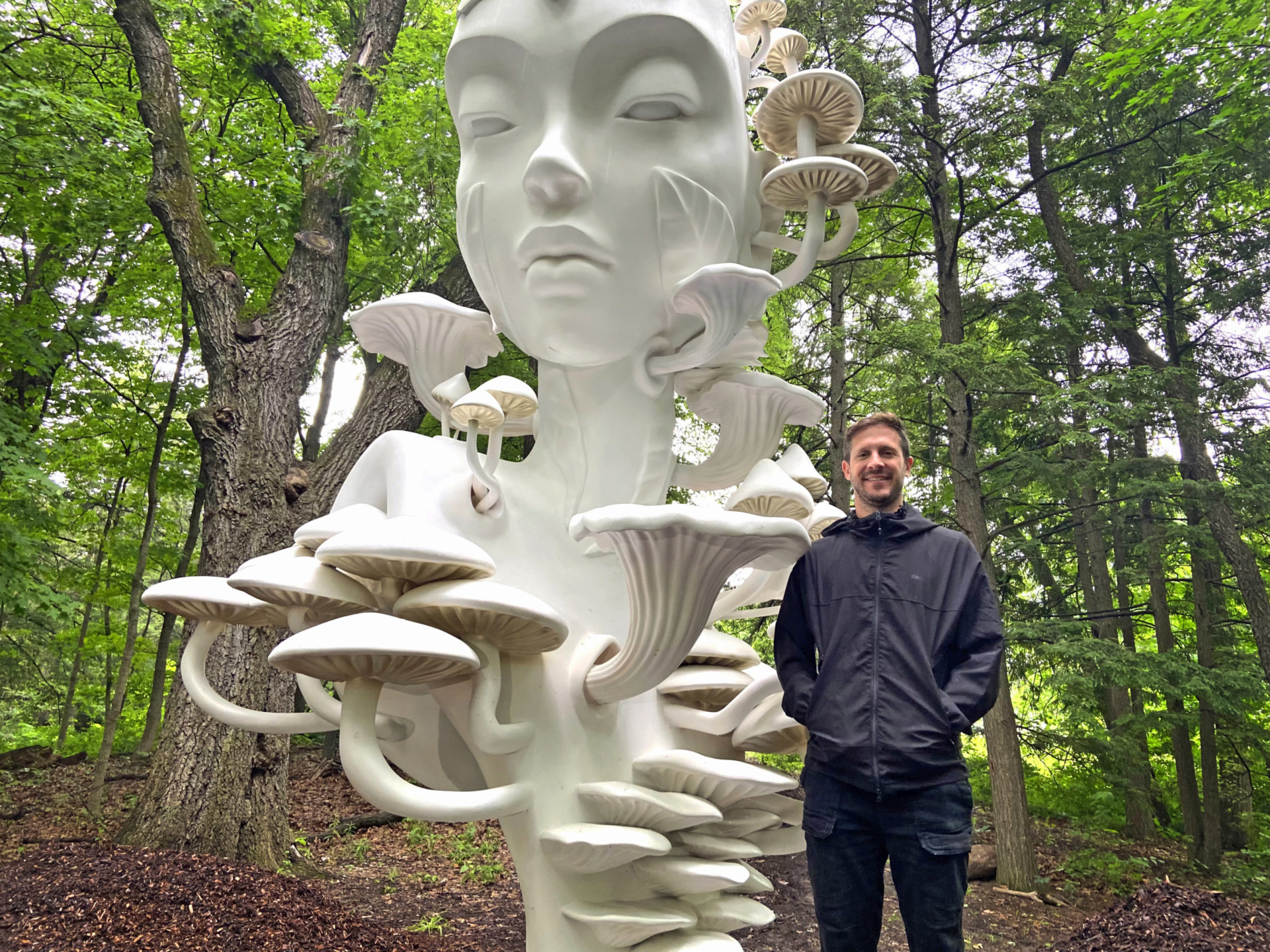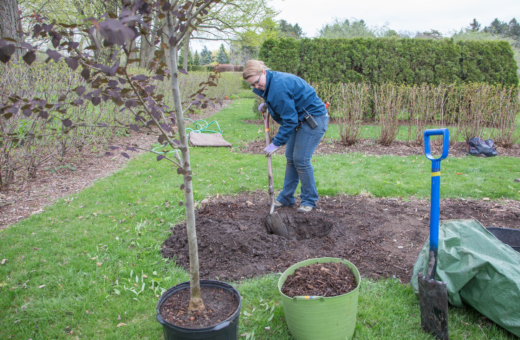June 21, 2022
Expanding the Human+Nature Exhibition: A Conversation with Artist Daniel Popper
South African artist Daniel Popper’s largest exhibition in the world is now even bigger. The Morton Arboretum has introduced three new sculptures to join the popular Human+Nature exhibition’s original five: Hallow, UMI, Sentient, Heartwood, and Basilica. Ephemera and Mycelia are large-scale sculptures, while Ginkgo is a smaller-scale piece created to commemorate the Arboretum’s 100-year anniversary celebration.
The Arboretum connected with Popper recently to discuss the exhibition’s expansion, the inspiration behind his new work, and the thematic thread running through all eight sculptures comprising Human+Nature.
What do you want people to know about the three new Human+Nature sculptures joining the exhibition?
Two of the works–Mycelia and Ephemera–extend reflections on how our senses connect us to the natural world. Where Mycelia highlights the neurological network of nature and is named for the filigreed, thread-like fungus that transmits electrical signals, much like animals’ nervous systems, Ephemera prominently features daffodils as ears, which call attention to nature’s sound. The work invites the guest to listen, observe, and appreciate the sonic landscape of The Morton Arboretum.
Ginkgo, the third sculpture, celebrates the Arboretum’s 100-year contribution to the preservation of trees, featuring 100 ginkgo leaves framing a face in cast aluminum. All three works respond to the natural settings in which they are placed within the landscape.
As you mentioned, Ginkgo commemorates the Arboretum’s 100-year anniversary. Why did you connect the centennial sculpture to a ginkgo tree?
In researching the centennial piece, I was struck by the founder Joy Morton’s love for the ginkgo tree, which he favored not only for its longevity and beauty but for the story of its conservation. At once considered near-extinct, the ginkgo’s continued survival is a testament to human care, a concept deeply rooted in the very mission of the Arboretum–to preserve and restore elements of nature that could otherwise disappear. “The Arboretum is a ginkgo, and a ginkgo it shall remain,” Joy Morton wrote.
How are the new Human+Nature sculptures different from the original sculptures, and how do they tie in with the overall exhibition theme?
With these new works, I stepped further into the surreal realm of fantasy, exploring more ethereal and otherworldly understandings of the natural world. As an extension of the original sculptures, the new sculptures continue in the theme of human communion with nature and how we connect and interact with nature. We are, after all, a part of nature, inseparable and indistinguishable from it at times, however much we might feel distanced from the natural world.
What inspired your work this time around?
After spending many weeks at the Arboretum installing the earlier works included in this exhibition, I became deeply inspired by the connection I felt to the place. These three new sculptures are profoundly intertwined with the setting; each shaped by and for their respective environments. They resonate more clearly, I feel, with the energy of the land.
How do you hope people will respond to the new sculptures?
I truly hope people will engage with these new sculptures as they did the previous pieces—with individual awe and understanding. I never want to dictate or project meaning, but rather to invite people to reflect on their own relationships with nature and their place within the natural world. It has been a distinct pleasure hearing the many unique interpretations from Arboretum visitors.



